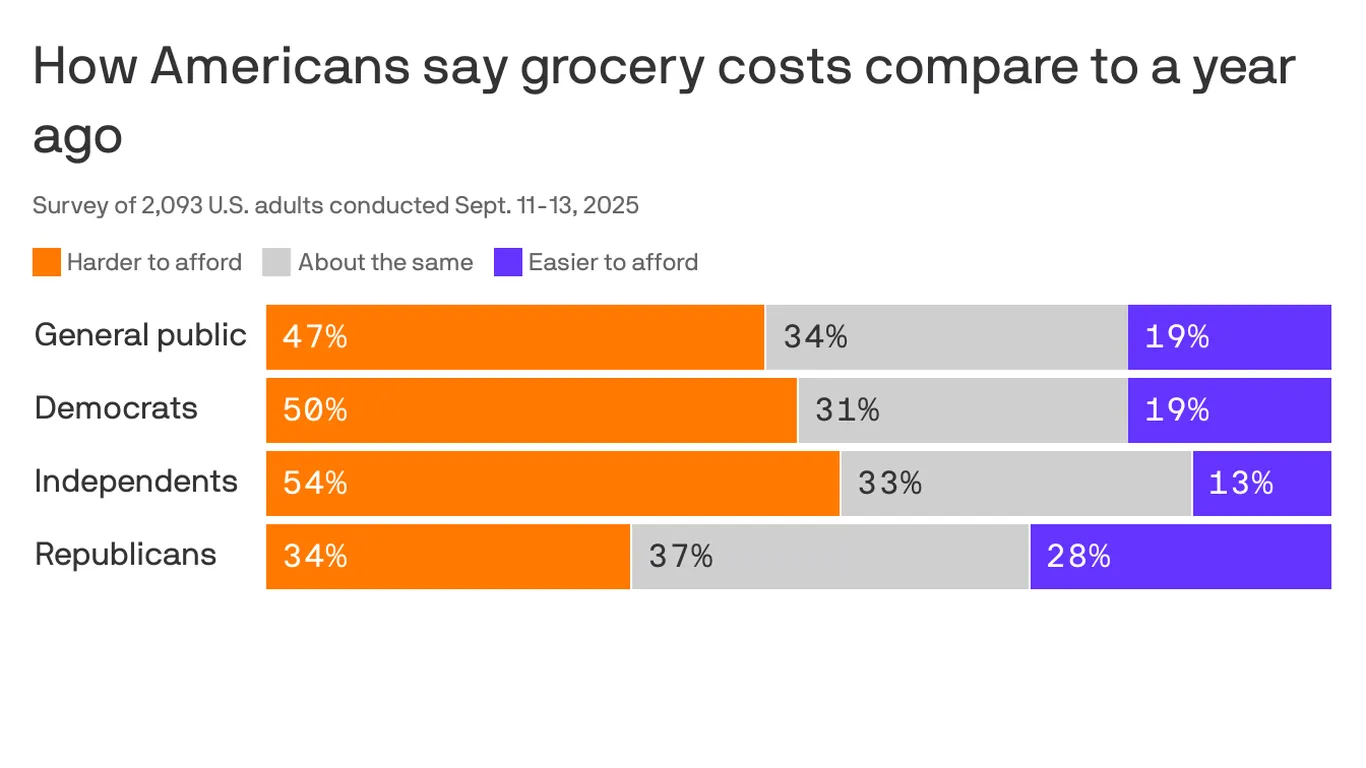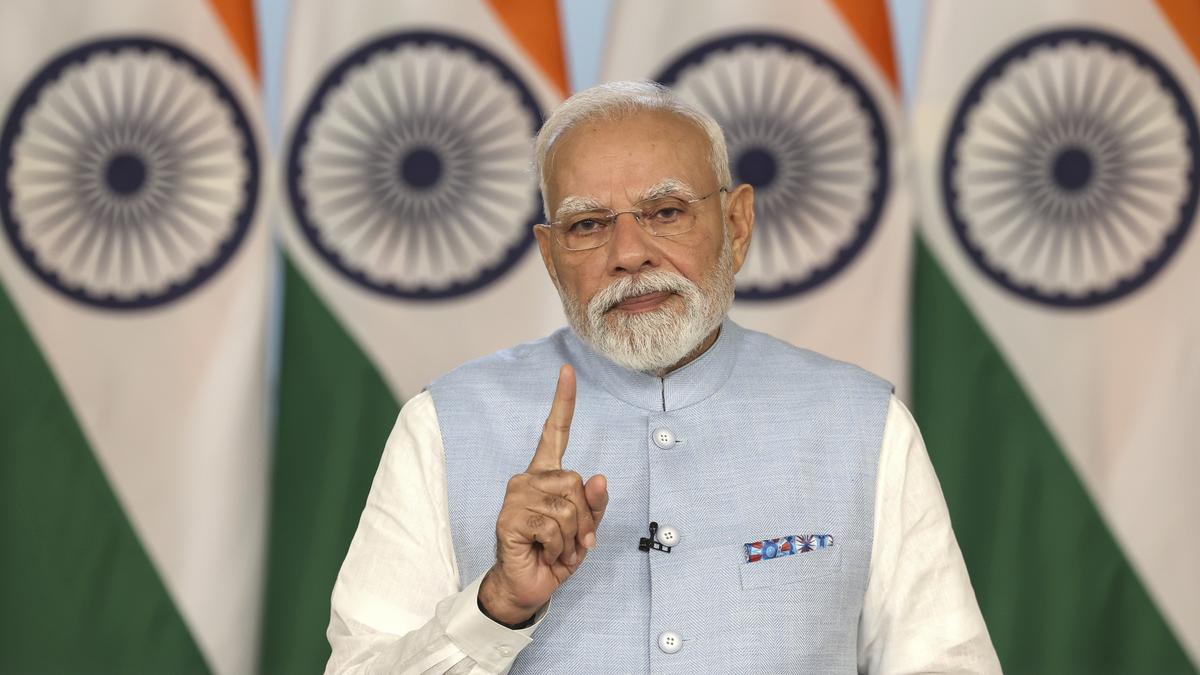By Margaret Talev,The Harris Poll
Copyright axios

Just 1 in 5 respondents say it’s easier to afford groceries now than this time last year; nearly half say it’s harder, while 1 in 3 say it’s about the same.
The big picture: 8 in 10 Americans say they believe the president has “significant influence” over the U.S. economy, but just 47% say the Trump administration has had a positive impact on the economy this year.
What they’re saying: “The midterms might hinge on a ‘Cleanup on Aisle 4!’ ” said John Gerzema, CEO of The Harris Poll.
“It’s such a visible signal that life is harder today than it was even last year when we were in an election cycle,” Gerzema said of grocery bills. Respondents “don’t feel like things are changing fast enough. This is going to be a significant issue for the president.”
The other side: “President Trump recognizes he inherited the worst inflation crisis in a generation from Joe Biden, and that is why he has tasked his admin with fixing it. Grocery prices are coming down, such as egg prices which have plummeted by nearly 80%, and we recognize there is more work to be done,” press secretary Karoline Leavitt told Axios.
A second administration official denied that groceries were actually getting less affordable, telling Axios “the actual data belies this.”
Flashback: Grief at the checkout line was a significant driver of voters’ discontent with Democrats in last year’s presidential elections. Trump bashed then-Vice President Harris over grocery prices and promised he would lower prices “on Day One.”
Bureau of Labor Statistics data show a different story — and this new survey reflects Americans’ own fears and experiences ahead of next year’s midterm elections.Overall inflation for food has been elevated but not particularly extreme, clocking in at 3.2% for the 12 months ended in August, per Labor Department data.
Reality check: Three factors appear be contributing to Americans’ discontent over those higher prices.
Prices for certain staple items many people consume nearly every day have risen much more than the average, including ground beef (up 12.8% in the past year), eggs (up 10.9%) and coffee (up 20.9%).Moreover, the price rises now are coming on top of earlier price surges in the 2021-2022 period, which slowed down in 2023 and 2024 but never reversed. Over the last five years, grocery prices have risen by more than 30%.The job market is weaker and wages aren’t rising as quickly as they were earlier in this economic cycle, so any given rise in grocery bills may pinch harder than it did when employers were racing to give employees wages.
Zoom out: This is part of a broader phenomenon in which consumer sentiment and confidence data is depressed, despite many measures of well-being — the unemployment rate, the stock market, GDP growth — looking pretty good.
Tariffs weigh on sentiment
By the numbers: Less than 1 in 3 say Trump’s tariffs have been good for the U.S. economy, U.S. businesses or personal finances; 63% worry about shortages of key goods they rely on due to tariffs.
Less than half (47%) say 2025 has been a better year than 2024. Nearly two-thirds (65%) say they’re financially squeezed each month.
The share saying saying the U.S. is looked up to globally, or should be a model, has dropped by about 5 percentage points since the start of the year.
Between the lines: A majority of respondents say they feel financially behind or stuck. But the Republicans who feel that way are far more likely to blame businesses or themselves, while the Democrats and independents are more likely to blame the current government.
37% of Americans feeling stuck or behind say the current government is most responsible for their situation (20% of Republicans, 38% of independents, 48% of Democrats). The rest are split, with about 32% each between blaming businesses (41% R, 31% I, 26% D) or personal decisions (39% R, 31% I, 27% D).Republicans are nearly twice as likely as independents (49% vs. 27%) to feel they’re getting ahead financially, with Democrats somewhere in between (36%). Republicans also are far less likely than independents or Democrats to say that groceries are harder to afford now, or that grocery prices make them anxious.
These findings taken together show why business is on a “tightrope,” Gerzema said, and how despite so many warning signs Trump has maintained his “Teflon” status with much of his base.
What we’re watching: Independents’ survey responses often land somewhere between Republicans’ and Democrats’, but in this survey we see independents more closely aligned with Democrats — another warning sign for Trump and Republicans in Congress.
Methodology: The findings in this Axios Vibes survey by The Harris Poll are based on a nationally representative sample of 2,093 U.S. adults, of whom 1,814 are registered voters, conducted online, Sept. 11-13, 2025.
The sampling precision of Harris online polls is measured by using a Bayesian credible interval.For this study, the data is accurate to within +/- 2.4 percentage points for the overall population using a 95% confidence level, and +/- 3.0 percentage points for respondents within the registered voters.



